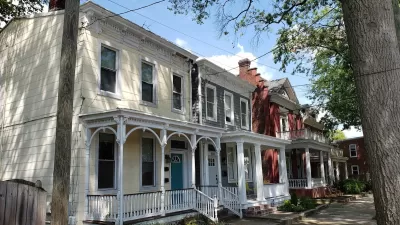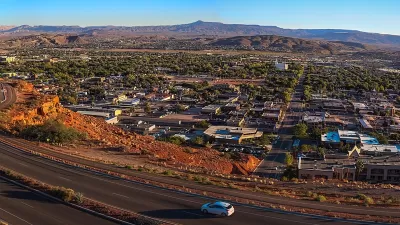Wealthy communities are incorporating their own cities, draining tax revenue and resources away from surrounding neighborhoods.

In a piece for Bloomberg CityLab, Luisa Godinez-Puig and Brian D. Smedley outline the results of their research on the secession of often wealthy, white communities from larger municipalities, such as the secession of the new city of St. George from East Baton Rouge Parish in Louisiana last month. “What we’ve found is that these secessions perpetuate modern-day segregation and limit opportunity for left-behind communities, a form of opportunity hoarding that we call ‘white fortressing.’”
According to the authors, ‘opportunity hoarding’ concentrates public resources in already advantaged areas and limits access to opportunities for other residents. “In Louisiana, it is estimated that St. George’s secession would take away $48.3 million in annual tax revenue from East Baton Rouge Parish — nearly 8% of the parish’s total tax revenue.”
Research also shows that having more governments in a certain geographic area has negative health impacts on Black, but not white, Americans. Meanwhile, “In both Louisiana and Georgia, only citizens inside the boundary of the proposed new city get to vote by referendum, even if the incorporation would decimate the tax revenue for the surrounding community.”
FULL STORY: The New ‘White Fortress’ Cities of the American South

Planetizen Federal Action Tracker
A weekly monitor of how Trump’s orders and actions are impacting planners and planning in America.

Restaurant Patios Were a Pandemic Win — Why Were They so Hard to Keep?
Social distancing requirements and changes in travel patterns prompted cities to pilot new uses for street and sidewalk space. Then it got complicated.

Maui's Vacation Rental Debate Turns Ugly
Verbal attacks, misinformation campaigns and fistfights plague a high-stakes debate to convert thousands of vacation rentals into long-term housing.

In California Battle of Housing vs. Environment, Housing Just Won
A new state law significantly limits the power of CEQA, an environmental review law that served as a powerful tool for blocking new development.

Boulder Eliminates Parking Minimums Citywide
Officials estimate the cost of building a single underground parking space at up to $100,000.

Orange County, Florida Adopts Largest US “Sprawl Repair” Code
The ‘Orange Code’ seeks to rectify decades of sprawl-inducing, car-oriented development.
Urban Design for Planners 1: Software Tools
This six-course series explores essential urban design concepts using open source software and equips planners with the tools they need to participate fully in the urban design process.
Planning for Universal Design
Learn the tools for implementing Universal Design in planning regulations.
Heyer Gruel & Associates PA
JM Goldson LLC
Custer County Colorado
City of Camden Redevelopment Agency
City of Astoria
Transportation Research & Education Center (TREC) at Portland State University
Jefferson Parish Government
Camden Redevelopment Agency
City of Claremont





























